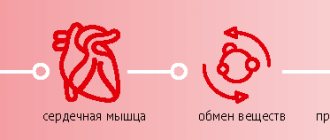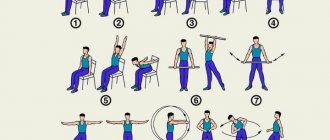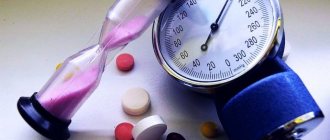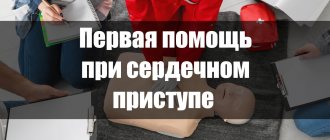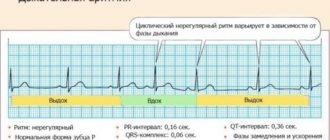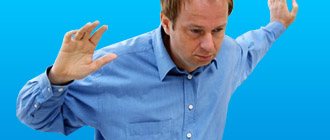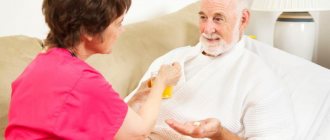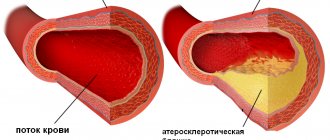Exercise therapy for cardiovascular diseases has a powerful positive effect on the patient’s body. It improves physical and mental well-being, reduces the risk of many diseases and helps to recover from them, regulates the functioning of the body, increases activity and performance. At the Yusupov Hospital, rehabilitation specialists take an individual approach to choosing a complex of physical therapy for the cardiovascular system. Before the start of classes, patients are examined by a cardiologist using modern devices from leading European and American companies. The doctor measures blood pressure and counts the pulse rate before the start of each exercise and at the end of the exercises.
The following factors contribute to the occurrence of cardiovascular diseases:
- physical inactivity;
- poor nutrition;
- unfavorable environmental factors;
- psycho-emotional overload;
- bad habits.
In order not to cause damage to the health of a sick person, rehabilitators dose the load depending on the indicators of the functional capacity of the cardiovascular system. The objectives of exercise therapy for diseases of the cardiovascular system are determined by the nature of the disease and the period of the disease. In the acute period of the disease, patients perform exercises lying down, then sitting. Over time, the motor mode expands.
Exercise therapy for diseases of the cardiovascular system is the main means of rehabilitation during the recovery period. The main type of physical activity is measured walking. It promotes the physiological restoration of heart function. The purpose of physical therapy during the maintenance period is to consolidate the achieved results and restore physical performance. After complete recovery, patients are recommended to continue exercising in cyclic activities - running, Nordic walking, skiing. Water procedures are useful - swimming in a pool or open water.
Exercises for diseases of the cardiovascular system
A set of exercises for patients with arthritis (for most exercises you will need a chair with a straight back)
1. I.p. – sitting on a chair, lean your back along the entire back of the chair. Straighten your back, straighten your shoulders, lift your head and inhale. Relax – exhale. 8-10 times.
2. I.p. - sitting on a chair. 1 – slowly tilt your head, touching your chin to your chest, 2 – slowly tilt your torso towards your knees, 3-4 – slowly straighten up in a standing position.
3. I.p. – sitting at the table, hands on the table, forearms raised up. Slowly clench your fingers into a fist, trying to reach your middle finger with your thumb. 8-10 times.
4. I.p. – sitting at the table, hands on the table, palms up. Use the tip of your thumb to touch the base of each finger of your hand in turn. 8-10 times with each hand.
5. I.p. – fingers clenched into a fist. Circular movements in the wrist joint in one direction and the other. 4-5 times with each hand.
Repeat the same exercises, but in i.p. the elbow rests on the side.
6. I.p. - sitting on a chair, leaning against the back, hands on your knees. Slowly bend your right arm towards your shoulder, straightening it forward, bend it again and lower it into a standing position. Repeat the same with your left hand. 8-10 times with each hand.
7. I.p. – sitting on a chair, feet on the floor. Raise the heel of your right foot and lower it. Raise your fingers - lower them. Repeat alternately 4 times with each foot, then 4 more times with both feet simultaneously.
8. I.p. - Same. Without lifting your heels and toes from the floor, arch the arch of your right foot, forming a “bridge.” Same with the left. Repeat 6-7 times with each leg.
9. I.p. - sitting on a chair cross-legged. Flexion and extension of the feet of the free leg. 6-8 times with each leg.
10.I.p. - Same. Pull the toe of your foot up, down, in, out. Then make a circular motion. Repeat 6-8 times with each leg.
Adaptive joint gymnastics
Each exercise is performed 10-12 times. Stretching exercises are performed with a delay at the end point for 10-15 seconds.
1. Breathing exercises.
2. I.p. – gray-haired, arms bent at the elbows. Moving forward and backward on the buttocks.
3. I.p. – sitting emphasis, legs bent, feet on the floor. Alternately lowering the legs to the right and left with a delay of 10 seconds.
4. I.p. – sitting emphasis, legs bent apart. Alternately lowering the knee inward.
5. I.p. - sit up in back position. Simultaneous (alternate) flexion and extension of the feet.
6. I.p. - Same. Rotation of the foot.
7. I.p. - Same. Bending your right leg, touch the toe of your left knee and vice versa.
8. I.p. - Same. Alternately moving your legs to the sides.
9. I.p. - Same. Alternately raising bent legs (shins parallel to the floor).
10.Repeat exercise No. 3.
11. I.p. - lying on your back. Repeat exercise No. 9.
12.I.p. – lying on your back, legs bent, feet on the floor, hands behind your head. Shoulder raises.
13.I.p. - Same. Raising the pelvis.
14.I.p. - Same. Repeat exercise No. 4.
15.I.p. – lying on your back, the right one is bent, the heel of the left foot is on the right knee, hands behind the head. Raising the body with a turn to the left until the elbow touches the knee of the left leg.
16. Repeat the same to the right, changing the position of the arms and legs.
17.I.p. – lying on your back, legs bent, feet on the floor, hands behind your head. Raising the shoulders and alternately touching the heel with the hands of the same name.
18.I.p. - Same. Repeat exercise No. 3.
19.I.p. – lying on your back, legs forward. Spreading your legs to the sides.
20.I.p. - Same. Alternately lowering your legs to the sides.
21.I.p. – lying on your back, legs bent, feet on the floor, hands behind your head. Simulation of cycling.
22.I.p. - on my knees. Breathing exercise: inhale through the nose, exhale through the mouth with the sound ha-a-a.
23.I.p. – lying on your stomach, the right one is laid back. Flexion and extension of the right shin. Repeat the same on the left leg.
24.I.p. - Same. Alternately moving the legs back with the foot towards you.
25.I.p. – lying on your stomach, arms to the sides. Swing the right back with abduction to the left until the left hand touches. The same with the left leg with abduction to the right.
26.I.p. – lying on your stomach, press as close to the floor as possible. Raising the pelvis.
27.I.p. – lying on your stomach, hands in front of your chest. Raising the body by moving the bent arms back.
28.I.p. – sit on your heels, lean forward, hands up on the floor. Extending your legs, go into a position lying on your hips.
29.I.p. - Same. Alternately extending the legs back (the chest lies on the thigh of the bent leg).
30.I.p. - kneeling position. Bend forward, alternately touching your shoulders to the floor.
31.I. p. - the same. Breathing exercise.
32.I.p. – lying on your left side, with support on the forearm of your left hand. Alternate swings to the side with a bent and straight right leg.
33.I.p. - Same. Touching the floor with the knee of the right leg in front of the left.
34.I.p. - the same, right hand behind the head. At the same time, bending your right to the side, touch the floor in front of you with your right elbow. Straightening your leg, return to standing position.
35.I.p. - Same. Retracting the right back.
36.I.p. - Same. Alternate swings with the right: to the side, diagonally forward, diagonally back.
37.I.p. - Same. Raising bent legs to chest.
38.Repeat exercise No. 31.
39-44 – repeat exercises 32 to 37 while lying on your right side.
45. Repeat exercise No. 27.
Principles of physical therapy for cardiovascular diseases
In order to obtain a therapeutic or preventive effect during exercise therapy, a number of principles should be observed:
- systematic;
- regularity;
- duration;
- load dosing;
- individualization.
Their violation can lead to irreparable consequences. During physical therapy exercises, blood pressure increases in patients suffering from cardiovascular diseases, the pulse quickens, and the amount of circulating blood in the heart muscle increases. Physical activity is necessary for all diseases of the cardiovascular system.
The main form of exercise therapy is therapeutic exercises. The lesson consists of three sections: introductory, main and final. Rehabilitators individually select a set of exercises so that they consistently cover different muscle groups. Patients with cardiovascular diseases should perform exercises at a calm, average pace, rhythmically.
The introductory part makes up 15-20% of the time of exercise therapy. The introductory section uses simple exercises designed for small and medium muscle groups. They promote learning and prepare the patient for the main part of the training.
The main section takes 65-70% of the time and consists of general developmental exercises. The final part is characterized by a decrease in physiological load. It takes 15-20% of the class time.
Events calendar
Nowadays, the incidence of cardiovascular pathology increases every year, including among middle-aged people, and occupies a leading place among the causes of mortality. Risk factors for the development of diseases of the cardiovascular system are: smoking, alcohol consumption, poor nutrition, excess body weight, and a sedentary lifestyle. If you have disturbances in the functioning of the cardiovascular system, remember that in addition to the drug therapy selected by your doctor, it is important to maintain physical activity. Therapeutic exercise is indicated for any stage of cardiovascular disease.
The objectives of exercise therapy for diseases of the cardiovascular system are determined by the nature of the disease and the period of the disease.
In the acute stage, a complex of physical therapy will be selected individually by a physical therapy doctor in a hospital setting; in the chronic stage, sets of exercises are one of the main methods of rehabilitation that can be performed at home, but always under the supervision of the attending physician. A set of exercises should also be developed individually, taking into account the stage of the disease, general condition, concomitant pathology, etc.
The principles of physical therapy for pathology of the cardiovascular system: systematicity, regularity, duration, dosing of loads, as well as individualization.
Regular and properly selected physical exercises have a positive effect on the functioning of the heart muscle, improve blood circulation, stimulate the respiratory system, gastrointestinal tract, and regulate metabolism.
When starting physical education, a patient with a pathology of the cardiovascular system can be recommended to first perform a daily set of morning exercises, then walks, and exercise equipment. Before starting classes, it is also important to convey to the patient that during physical activity it is necessary to monitor the heart rate and general well-being. If you experience shortness of breath, dizziness, discomfort in the cardiac area, or palpitations, you must stop exercising; if you cannot cope with the above complaints on your own, consult a doctor immediately.
It is important to remember that physical activity should be increased gradually, moving from simple exercises to more complex ones. You should start exercising no earlier than 1.5-2 hours after eating. In the future, it is possible to combine a set of physical exercises with walking. When performing a set of exercises, it is important not to forget about proper breathing and breathing exercises.
Exercises should be combined with a rational diet and giving up bad habits.
For patients with cardiovascular pathology the following is contraindicated:
high intensity and prolonged physical activity,
performing exercises until complete fatigue,
· static exercises with maximum tension,
· sudden tension and acceleration of the pace of execution.
The exercise therapy complex consists of three parts: an introductory or warm-up, which makes up 15% of the total time and consists of exercises for small and medium muscle groups, the main part - 70% of the time (general development, exercises for coordination of movements) and the final part - 15% of the time (reducing loads, relaxation exercises).
An approximate set of exercises for arterial hypertension:
1. Starting position standing. Walk on your full feet, on your toes, on your heels, in a cross step, for 1-2 minutes.
2. Starting position - sitting on a chair. Hands on knees. Then - hands in front of the chest, with the elbows pulled back - inhale. Bend forward with arms hanging freely - exhale. Repeat 3-4 times.
3. Hands down. Raise your shoulders up - inhale. Circle, shoulders back, lowering them down - exhale. Repeat 5-6 times.
4. Hands down. Bend your arms to your shoulders, clenching your hands into a fist, pull your elbows back - inhale. Lower your hands down - exhale. Repeat 5-6 times.
5. Hands on the belt. Hands forward while simultaneously extending one leg at the knee joint - inhale. Lower your hands with the grip “locked” under the knee, shake your shin - exhale. Repeat 4-5 times.
6. Bend your legs, feet on the same line (left in front of right). Stand up - exhale, sit down - inhale. Repeat 3-4 times.
7. Starting position standing. Walk freely for 30 seconds.
8. Feet shoulder width apart. Rotate the torso with abduction of the arm (first the right, then the left) to the side and back - inhale. Return to the starting position - exhale. 3-4 times in each direction.
9. Walking with raising the arms for two steps and lowering with successive bending at the wrist, elbow and shoulder joints for three steps. Repeat 2-3 times.
10. Bend the body alternately forward and to the sides. Repeat 3-4 times.
11. Hands down, feet shoulder-width apart. Free swings of arms. Repeat 5-6 times.
12. Walking with a turn of 1800 every 2-4 steps for 30 seconds.
13. Starting position sitting. Sitting on the edge of a chair, tilt your torso forward (do not lower your head), swing your arms freely back and forth. Repeat 6-20 times.
14. While sitting, lean back in the chair. Diaphragmatic breathing. 4-5 times.
Perform exercises at an average pace.
Every middle-aged person who wants to stay healthy should take at least 10,000 steps a day.
Be healthy!
The therapeutic effect of physical exercises for diseases of the cardiovascular system (hereinafter referred to as CVSS) is based on individually selected and strictly dosed loads, the prescription of which must take into account the characteristics of the disease, the nature, degree and stage of the pathological process, the severity of organic and functional disorders.
In physical therapy, a distinction is made between general training aimed at restoring and increasing the physical performance of the entire organism as a whole, as well as special training aimed at restoring and improving the functions of certain organs and systems.
In cardiology, general training and dynamic loads are predominantly used (with the exception of exercise therapy in patients whose condition requires bed rest); in neurology, orthopedics and rheumatology, special training is used.
Physical activity begins with a small pace and volume, which gradually increases under the control of the patient’s condition, as a result of which the body adapts to higher loads and the physical disorders caused by the disease are corrected.
The use of physical therapy for CVS increases the effectiveness of complex therapy , accelerates recovery time after myocardial infarction and other acute coronary syndromes, strokes, cardiac surgery, etc., helps slow down further progression of the disease, reduce the risk of complications and premature death.
If you have CVSS, you should not start exercise therapy without consulting and recommending a doctor , as well as exceeding the recommended intensity and volume of physical activity, as this can lead to a worsening of the condition and the development of dangerous complications.
Sample list of recommended exercises
I.p. lying on your back:
1. Arms forward in arcs upward - inhale, arms down through the sides - exhale.
2. Raising your legs bent at the knees - exhale, lowering your straight legs - inhale.
3. Abduction and adduction of the raised leg. Breathing is voluntary.
4. Imitation of leg movements when riding a bicycle. Breathing is voluntary.
5. Transition to a sitting position with or without the help of hands.
I.p. standing:
1. Hands in lock with palms up, leg back on toes, bend over - inhale, and. p. - exhale.
2. Hands clasped with palms up, torso tilted to the side, leg of the same name to the side - inhale, and. p. - exhale.
3. Arms bent in front of the chest, springy arms pulled back.
4. Hands on the belt, circular movements of the body.
5. Arms to the sides - inhale, bend forward, hands touching the knees - exhale.
6. Swing your leg back and forth. Breathing is voluntary.
7. Squats, arms forward - exhale, and. n. - inhale.
8. Walk normally on your toes, with the knee raised high.
These simple exercises are available to everyone . When performing them, you should focus on general well-being and initial physical fitness.
The need and need for movement is inherent in man by nature. Physical activity is the path to a fulfilling life! Be healthy and happy!
Contraindications to exercise therapy
Therapeutic exercise is not performed for certain cardiovascular diseases or in the stages of their exacerbation:
- acute inflammatory diseases of the heart, blood vessels,
- myocardial infarction in the period of exacerbation,
- increased heart failure,
- acute stage of rheumatic heart disease,
- angina pectoris with frequent exacerbations,
- pronounced sclerotic changes in blood vessels,
- bulging of blood vessel walls (aneurysm),
- atrial fibrillation,
- cardiac asthma,
- paroxysmal tachycardia,
- vascular thrombosis,
- stage III hypertension,
- late stage of cerebral atherosclerosis.
You should definitely not engage in fitness activities on your own if you have cardiovascular pathologies without a doctor’s advice, or increase the level of physical activity beyond the recommended intensity, as this increases the risk of worsening the disease state and developing new complications that are dangerous to health.
Advantages of the exercise therapy method
The use of therapeutic physical activity increases the effectiveness of complex therapy for cardiovascular pathologies, accelerates the process of bringing patients’ health back to normal, and helps slow down the further possible progression of the pathology in terms of the development of complications. As a result of exercise therapy, the following positive dynamics occur in the body: blood flow and contractile function of the myocardium are improved, blood pressure and heart rate are normalized, the content of lipids and glucose in the blood decreases, the activity of the blood fluid anticoagulation system increases and the risk of thrombosis is reduced.
In our department, exercise therapy specialists select differentiated therapeutic complexes of physical movements for effective treatment and prevention of cardiovascular pathologies, taking into account the specifics of each patient’s disease.
